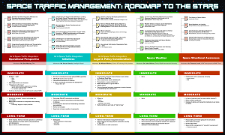Commercial Space Transportation: A Simulation and Analysis of Operations Impacts on the National Airspace System and Airline Stakeholders
Presentation Type
PowerPoint only (no paper)
Location
Henderson Welcome Center
Start Date
16-1-2018 11:00 AM
End Date
16-1-2018 12:30 PM
Abstract
Clearly, space launch, reentry, and landing activities have an effect on National Air Space (NAS) operations and its stakeholders. Notably, airlines have felt the impacts of space operations via flight delays and flight plan alterations, among others. Depending on the circumstance, attempts to minimize these effects for airlines can be detrimental to space launch and reentry operators, leading to additional costs in delays and lost opportunities for their mission successes. Effective and efficient integration of commercial and government space activities into the NAS is critical to all stakeholders and directly influences the safety of the operations, as well as, the economic benefits that these stakeholders aspire. Using fast-time simulation modeling, we analyze the potential impacts of launch and re-entry activities, occurring at Cecil Spaceport and Cape Canaveral, on commercial air traffic. The simulations will generate various operational metrics including potential conflicts and resolution of those conflicts which ultimately impact airline flight operations observable in the air through increased aircraft fuel burn, distance flown, flight times, and delays, as well as cancellations. These factors ultimately propagate to the operations on the ground, causing airport backup. Simulation-generated operational metrics will allow us to quantify and analyze the possible impacts on the NAS and the associated additional costs to the airlines. The results could have important implications for FAA regulations and standards, as well as, airlines’ network and schedule planning decisions.
Area of Interest
NAS Integration
Commercial Space Transportation: A Simulation and Analysis of Operations Impacts on the National Airspace System and Airline Stakeholders
Henderson Welcome Center
Clearly, space launch, reentry, and landing activities have an effect on National Air Space (NAS) operations and its stakeholders. Notably, airlines have felt the impacts of space operations via flight delays and flight plan alterations, among others. Depending on the circumstance, attempts to minimize these effects for airlines can be detrimental to space launch and reentry operators, leading to additional costs in delays and lost opportunities for their mission successes. Effective and efficient integration of commercial and government space activities into the NAS is critical to all stakeholders and directly influences the safety of the operations, as well as, the economic benefits that these stakeholders aspire. Using fast-time simulation modeling, we analyze the potential impacts of launch and re-entry activities, occurring at Cecil Spaceport and Cape Canaveral, on commercial air traffic. The simulations will generate various operational metrics including potential conflicts and resolution of those conflicts which ultimately impact airline flight operations observable in the air through increased aircraft fuel burn, distance flown, flight times, and delays, as well as cancellations. These factors ultimately propagate to the operations on the ground, causing airport backup. Simulation-generated operational metrics will allow us to quantify and analyze the possible impacts on the NAS and the associated additional costs to the airlines. The results could have important implications for FAA regulations and standards, as well as, airlines’ network and schedule planning decisions.


Comments
Visit the NAS Integration research panel
Check back for updates and the published full-text presentation.